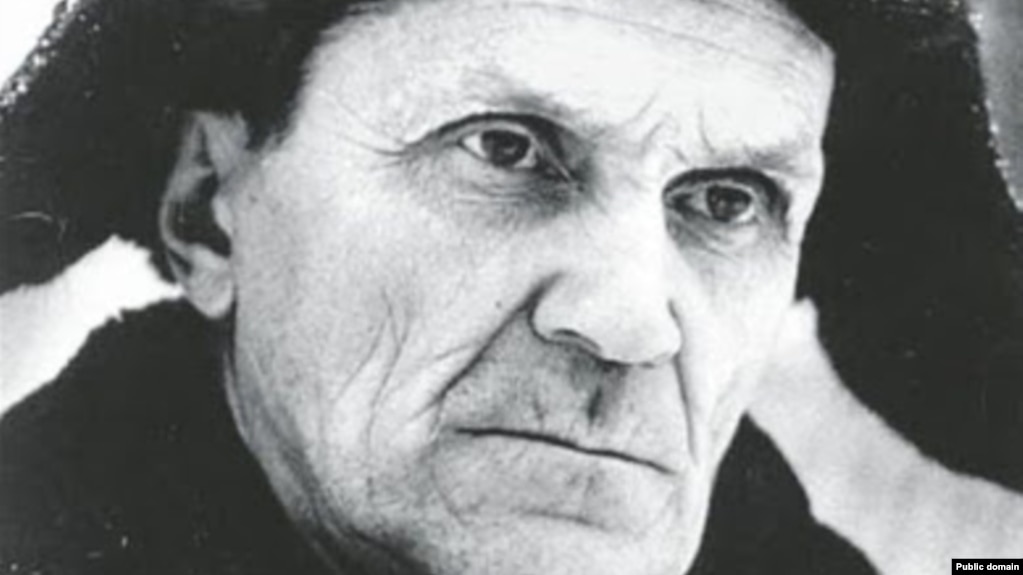
The authorities of Kolyma closed the memorial room of the writer, author of the famous "Kolyma Stories" Varlam Shalamov. The mini-museum was located in the village of Debin. It was opened in 2005 on the occasion of the writer's centenary in the local hospital, where the Gulag prisoner Shalamov, who was already dying of hunger and back-breaking work, was sent during the years of Stalin's repressions. An exposition in his memory was collected in Debin by local enthusiasts. And she operated in the hospital for many years. But now the museum has been formally closed by the Ministry of Health of the Magadan Region, but in fact the resolution came "from somewhere above," they say in Debin.
In order not to miss the main materials of Sibir.Realii, subscribe to our YouTube, Instagram and Telegram.
"Reached Socialism"
It all started with a report by a local journalist who came to the Shalamov Museum this autumn and at the same time told about the emergency condition of the hospital building in which it is located.
"The journalist wanted the best, but it turned out as usual with us," says local historian Ivan Dzhukha. "The building is really in disrepair – by 2027 this TB hospital is going to be closed, although they still do not dare to demolish the building. After all, the monument – at first it was the largest building in Kolyma, there was a convoy that guarded the repressed. And then a hospital was opened, in which Shalamov, who was exiled here, miraculously survived. He had already "reached the point of socialism" (the expression of those years, meaning that a man was "almost dead"), but here in this hospital he literally came back to life, here he wrote poems and stories as a prisoner. Of course, this is a monument and a very iconic place for a memorial in his memory.
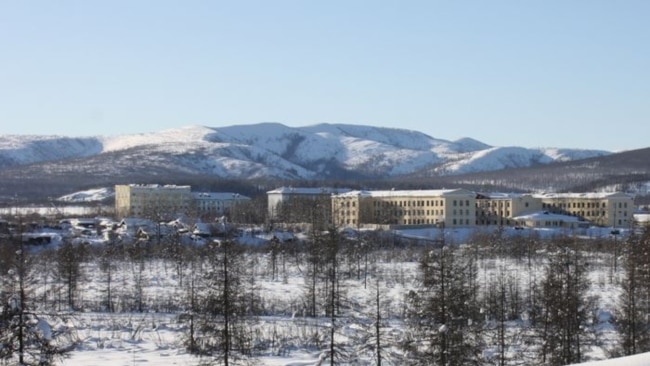 Hospital in the village of Debin
Hospital in the village of DebinBut after the uproar in the press about the state of the hospital, for some reason it was decided to close the memorial room.
"On the eve of the [presidential] elections, the authorities do not need this fuss, they knocked on the head of their subordinates, they recouped at the museum. As far as I understood, the chief physician was hit on the head from above by the minister of the region, and then the governor joined in. As a result, the museum, which had been collected by residents, local historians, and historians for 20 years, was closed," the local historian explains.
A year ago, Jukha initiated the renovation of the room in which the exposition dedicated to Shalamov is located. Now there are various utensils from the everyday life of Kolyma prisoners, their working tools, originals from Shalamov's personal library, which were donated to the museum by the family of the writer's close friend Irina Sirotinskaya, as well as copies of his handwritten diaries, recreated by a volunteer artist. The museum was equipped and repaired on donations from local residents and admirers of the writer.
 Shalamov Museum in Debin Hospital
Shalamov Museum in Debin Hospital- Elena Kubantseva, a designer and artist of the Gelendzhik Museum of Local Lore, and Vladimir Etikhin, a Kolyma pensioner and former mechanical engineer, agreed to help free of charge. Kolyma gold miner Sergey Filevsky helped significantly, also free of charge. The workers of his enterprise made everything wooden: showcases, bookshelves, stands. Several parcels with books (about 40 kg!) of Shalamov, both in Russian and in many languages of the world, were sent by the son of Irina Sirotinskaya, the successor, keeper and publisher of his heritage, - says the local historian.
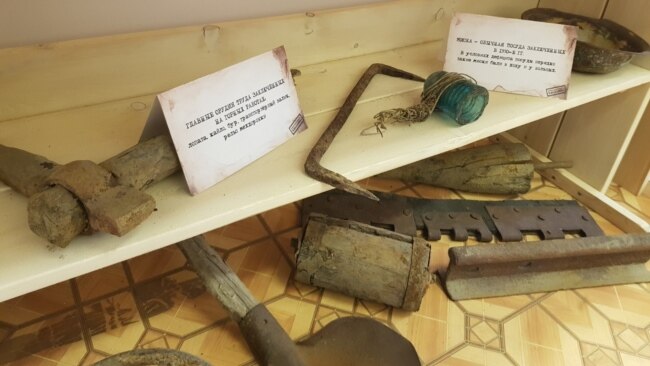 Shalamov Museum in Debin Hospital
Shalamov Museum in Debin HospitalThe building of the Debin hospital - several buildings connected to each other in three floors - is still considered "high-rise" in the village. The three-storey hospital "made of the best continental bricks" was described by Shalamov more than once in his "Kolyma Tales":
"The building was built to last. The corridors were filled with cement... Central heating radiators, sewer pipes – it was... Kolyma of the Future... The furniture in the club was all carved. The doctors of the prisoners were of all specialties... Already in 1948 there were two surgical departments – clean and purulent, two therapeutic departments, a neuropsychiatric department, a women's department, two large tuberculosis departments, a skin and venereal department, and one wing was given to civilian patients.
Shalamov came to Kolyma after his second arrest in January 1937, when he was sentenced to 5 years for "counter-revolutionary Trotskyist activities." The route was as follows: by train to Vladivostok, by steamship "Kulu" to Nagaev Bay, where the city of Magadan was being built. Shalamov worked at the Partizan gold mine, in a geological exploration party, mined coal in Kadykchan and Arkagal. In 1943, he was given a third term of 10 years for "anti-Soviet agitation."
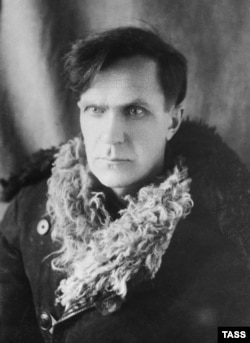
This period turned out to be the most difficult. At the end of 1943, Shalamov was already dying: "In a completely helpless state, I moved from the face to the hospital and back again, and again returned to the face. I spent a lot of time in Kolyma hospitals, as long as they could keep me."
Shalamov was saved by prisoner-doctor Andrei Pantyukhov, who arranged for him to take courses as paramedics. After them, in 1946, Shalamov was sent to the village of Debin, where he worked as a paramedic in the surgical department.
Shalamov describes his first meeting with the doctor in the story "Domino":
"They put me on a stretcher. My height is one hundred and eighty centimeters, my normal weight is eighty kilograms... On this icy evening, I had sixteen kilograms left, exactly a pound of everything: skin, meat, entrails, and brain.
"My name is Andrei Mikhailovich," the doctor said. "You don't need to be treated.
I got sucked under the spoon.
"Yes," the doctor repeated in a loud voice. "You don't need to be treated. You need to be fed and washed. You have to lie down, lie down, and eat. True, our mattresses are not feather beds. Well, that's okay – toss and turn a lot, and there will be no bedsores. Lie down for two months. And then there's spring."
In the story "Courses" Shalamov recalled:
"I knew how to take a siphon enema, a Bobrov apparatus, a scalpel, a syringe... I've learned a thousand things that I didn't know before—things that are necessary, necessary, useful to people."
In 1949, Shalamov worked for a year at a logging site, and then returned to Debin again as a paramedic in the emergency room.
In the autumn of 1951, Shalamov was released, but for two more years he worked as a volunteer paramedic near Oymyakon. Only in 1953 he was able to leave Kolyma and began work on "Kolyma Stories". As a former prisoner, he was forbidden to stay in Moscow for more than a day. For a couple of years after returning from Kolyma, he lived in the village of Turkmen in the Moscow region.
In 1955, Shalamov filed an application to the Prosecutor General's Office for rehabilitation, in 1956 the Military Collegium of the Supreme Court of the USSR considered it and overturned the decision of the Special Meeting of the NKVD of the USSR in 1937 and the verdict of the military tribunal in 1943. Shalamov was rehabilitated.
He moved to Moscow, and a year later the Znamya magazine published his poems for the first time. Since 1966, Shalamov's stories have been regularly published in émigré publications. In May 1979, the writer, whose genetic disease was progressing, was taken to a home for the disabled, from where in January 1982 he was forcibly sent to a psychoneurological boarding school as punishment for publications in the West. On the way, he caught a cold and died of pneumonia on January 17.
"Well, throw it in the trash!"
Having learned that the writer's memorial room had been closed, Jukha called the head physician of the Deba TB hospital, Natalia Sidorenko.
"She suddenly replied sharply, like, yes, they have closed it, where are we going to put the things (that's what she called the exposition)?" I'm like, 'Well, throw it in the trash!'" says Juha.

Natalia Sidorenko answered the phone numbers listed on the website of the branch of the Magadan Dispensary of Phthisiology and Infectious Diseases, but after the first question from the correspondent of Sibir.Realii, she hung up.
The Ministry of Health of the Magadan Region also refused to comment by phone, advising to "write an official request addressed to the minister."
Jukha has already written to the head of the Ministry of Health of the Magadan Region, Ivan Gorbachev, and asked him to preserve the exposition, which has been collected for 20 years.
"Dear Ivan Vladimirovich!
Ivan Georgievich Dzhukha from Gelendzhik writes to you.
I am the person who, together with two other enthusiasts on a voluntary basis, with the active support of Natalia Ivanovna Sidorenko and dozens of Russian citizens who donated their money, made a radical reconstruction of the Memorial Room of the great Russian poet and writer V. Shalamov in Debin.
Created 20 years ago by Chief Physician G. Goncharov, the Room was not included in the list of museum objects of the Ministry of Culture of the Moscow Region, but was exclusively under the jurisdiction of the Ministry of Health. Funds voluntarily donated by Russian citizens were spent on the collection of new valuable exhibits (in addition to those already collected by G. Goncharov and local historians). My assistants and I flew to Kolyma at our own expense and worked on a voluntary basis. A great help in the restoration of the Room was provided by the heirs of V. Shalamov...
The room has been actively visited by travelers on the highway all the years. It has become a must-have for all tour operators. The guest book clearly confirms this.
....
All the more unexpected was the decision to close the Great Writer's Room. Moreover, the exposition is dedicated not only to V. Shalamov; there were large expositions on the history of the hospital itself, the village of Debin, the construction of the first bridge over the Kolyma River...
I know that in time the hospital will be closed. During this time, I am sure, the issue of placing exhibits in the new premises will be resolved. I would like to transfer the Room "under the wing" of the Museum of Local Lore, under the jurisdiction of the Ministry of Culture.
I am sorry not so much for the destruction of my and my colleagues' work, but for the undermining of the idea of charity and patronage in the field of culture and art...
But the main thing is that it is a shame for the great writer, without whom Russian literature is inconceivable today, without whose name the history of Kolyma is incomplete.
I appeal to you with the hope that this situation will be rectified. The decision to close has been made by your department.
Sincerely, I. Jukha, writer, former geologist, who worked on exploration along the tributaries of the Debin River.
The author of the letter has not yet received a response from the minister.
Ivan Dzhukha comes from a family of Mariupol Greeks who were repressed and exiled to Tomsk. In 1974, as a student at Moscow State University, he was sent to Kolyma for geological practice, and then returned here almost thirty years later.
"In the 1970s, I spent four months here on reconnaissance. Then, all the years, I dreamed of returning to Kolyma, I gave up teaching geology and mineralogy at the university. And in 2001 he came to Kolyma. By that time, I already had a historical novel, a book about the repressed Mariupol Greeks, and I had already begun work on the repressions against the Greeks exiled to Norilsk, Krasnoyarsk, Arkhangelsk, and the Komi Republic, Kazakhstan. It was then that I discovered that most of the Greeks were in Kolyma, the circle was closed – I came here, setting myself the task of finding all the names. Found 1200 Greeks in 20 years of work. And, of course, I also studied the iconic figures who served their exile here. Korolev, Shalamov. Through the efforts of the local community of geologists, local residents and residents of the writer's small homeland - Vologda - they raised funds and opened a memorial plaque stating that Varlam Shalamov lived and worked in this hospital from 1946 to 1951," says Dzhukha.
According to him, Chief Physician Sidorenko personally cut the ribbon at the opening event after the renovation of the museum room in August 2023.
– It's a shame, of course, it's a shame, one of the main creators of the museum is the former head doctor of the hospital, my good friend, Georgy Borisovich Goncharov, he quit a long time ago and moved to Dagomys, I often visited his house, since I live in Gelendzhik. Before the war, he went to visit his children, who lived with him in Kyiv. And when the war started, I started calling him, and he said, "As long as I'm safe." Then he tried to go home, he has a job there, patients, but he couldn't. The last time we spoke was in February-March last year, and the connection was broken. I don't know anything about him, I'm looking for him on all channels, all phones are cut off," says Ivan Dzhukha. "He is still highly respected in Debin, he is a Doctor with a capital letter, he has never been a lackey, and now he would never close the museum, just to curry favor with his superiors. And he would have protested against the closure of the hospital, just like the residents themselves.
Locals confirm that the closure of the TB hospital "will finally finish off the village."
"Consider this a city-forming enterprise, the village is already withering, without it it will definitely collapse," says Svetlana, a resident of Debin. "And the doctors say that's wrong – the climate here is the most useful for tuberculosis patients, that's why it was discovered here. About 180-190 people signed a document that they were against [the closure of the hospital]. The museum, of course, is also important. But we only found out about its closure. Many tourists follow it and go to our Left Bank. So, we are not too on the route, we still need to get there.
People say that many people in the village asked the head doctor Sidorenko why and why the museum was closed. "This is not my decision," the doctor was quoted as saying by the interlocutors of Sibir.Realii.
– My friend, also the creator of the Kolyma Memorial Museum, also turned to Gorlacheva (Lyudmila Gorlacheva, Minister of Culture and Tourism of the Magadan Region), the Minister of Culture. Her: What do we have to do with it? Formally, of course, they are right, but the Minister of Culture could have reacted in a completely different way. But in Magadan, all officials are under the thumb of the governor. And the governor there is a "cool" guy, Nosov. The same one who, when he took office as governor, said that you, they say, call us a camp land, Korolev was sitting with us, but he worked here in his specialty. Sergey Pavlovich Korolev. Well, to speculate, then Shalamov also worked here in his specialty, right? He wrote poems and short stories while he was a prisoner. And no one spoke out against it. And it won't squeak. First of all, the elections are approaching, and they have an attitude: no negativity should be heard in the public space at this time. And besides, the camp topic is clearly out of favor now," Ivan Dzhukha argues.
In recent years, there has been a struggle in the Russian regions against memorial sites associated with the history of Soviet repressions. Memorial stones and crosses are being destroyed and desecrated, and plaques are being torn down. For example, in Yakutia, the authorities dismantled a monument to repressed and exiled Poles, in the Irkutsk region they sawed down a cross to repressed Lithuanians, and in the Tomsk region, unknown persons stole plaques with the names of Polish victims of Soviet repression in the 1930s and destroyed the cross.
"Shalamov is a powerful, tragic figure. And the museum, in fact, supports not only his memory, but our entire Kolyma," says Irina Zhulanova, a resident of Kolyma, Doctor of Geological Sciences, teacher at the N.A. Shilo Eastern Research Institute of the Far Eastern Branch of the Russian Academy of Sciences. – I have been working in Magadan all my life, for 60 years, although I graduated from Leningrad University. I myself fought for our regional library, which has been named after Pushkin since Stalin's times, to be named after Shalamov (with this idea we met Jukha). Because his tragedy is the tragedy of the whole country, and, except for him, no one has written so thoroughly and talentedly about Kolyma, about the whole essence of Stalin's machine. No one. Even Solzhenitsyn, in my opinion, did not cover the topic of repression in this way.
Now, of course, the whole topic of repression is being actively hushed up, since we are once again living in a criminal state. Putin is 100% evil, I'm a Leningrader myself, and when he opens his mouth, I just hear the words of the Leningrad punk from the yard. I was born in 1942 near Stalingrad, when Stalin died in 1953, it was the 4th grade, school. So now, of course, people are frightened again and prefer to keep quiet. Even as for the war in Ukraine, for example: in my inner circle, everyone thinks exactly the same as I do, they believe that this is a crime, but they are afraid to say it publicly.
As for the Shalamov Museum, it was a special destiny and he was an impeccable person. And people should know both their history and what impeccable people there are in the world," says Zhulanova.
No one knows what will happen to the exhibits from the Shalamov Museum now: the museum room in the hospital is closed, visitors are not allowed to enter it. Juha and the other creators of the museum hope that the exhibition will be preserved at least until they find a new space. They don't know if they will be able to find it.
Upd
Meanwhile, the Ministry of Health of the Magadan Region explained the decision to close the museum by the fact that it is located in an operating tuberculosis dispensary: "People with tuberculosis or suspected of this diagnosis are treated there. This airborne infectious disease can infect anyone, but children are especially susceptible to tuberculosis due to insufficiently formed immunity. <... >That is, there should be no strangers, including museum visitors, in this medical institution."
The regional Ministry of Culture promised to preserve all the exhibits from the memorial room and transfer them to the local history museum. "The unique exhibits collected by the staff of the hospital in the village of Debin and enthusiasts will be transferred to the fund of the regional museum of local lore. Now this issue is being resolved, the museum's specialists are working directly with the hospital: it is necessary to describe the items, conduct an examination to establish the historical and cultural value, and transport the items to Magadan," said the head of the ministry, Lyudmila Gorlacheva.
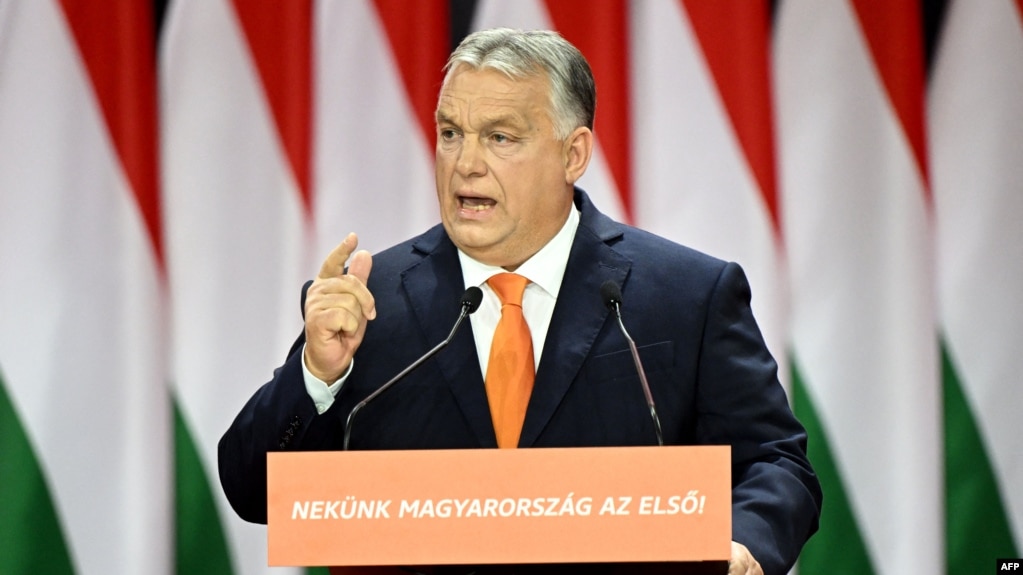 Hungarian Prime Minister Viktor Orban (file photo)
Hungarian Prime Minister Viktor Orban (file photo)

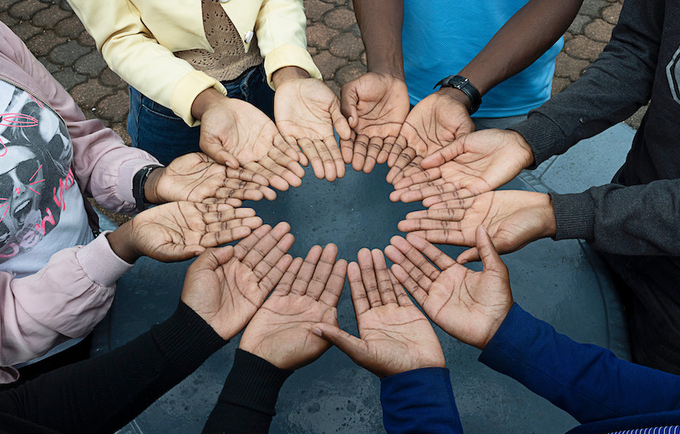 © UNFPA Eswatini
© UNFPA Eswatini

